ALICE Highlights †
Abstract
1. Introduction
2. Soft Probes
2.1. The Size of the Medium
2.2. Baryon/Meson Production
2.3. Anisotropic Flow
3. Hard Probes
3.1. Charmed Probes
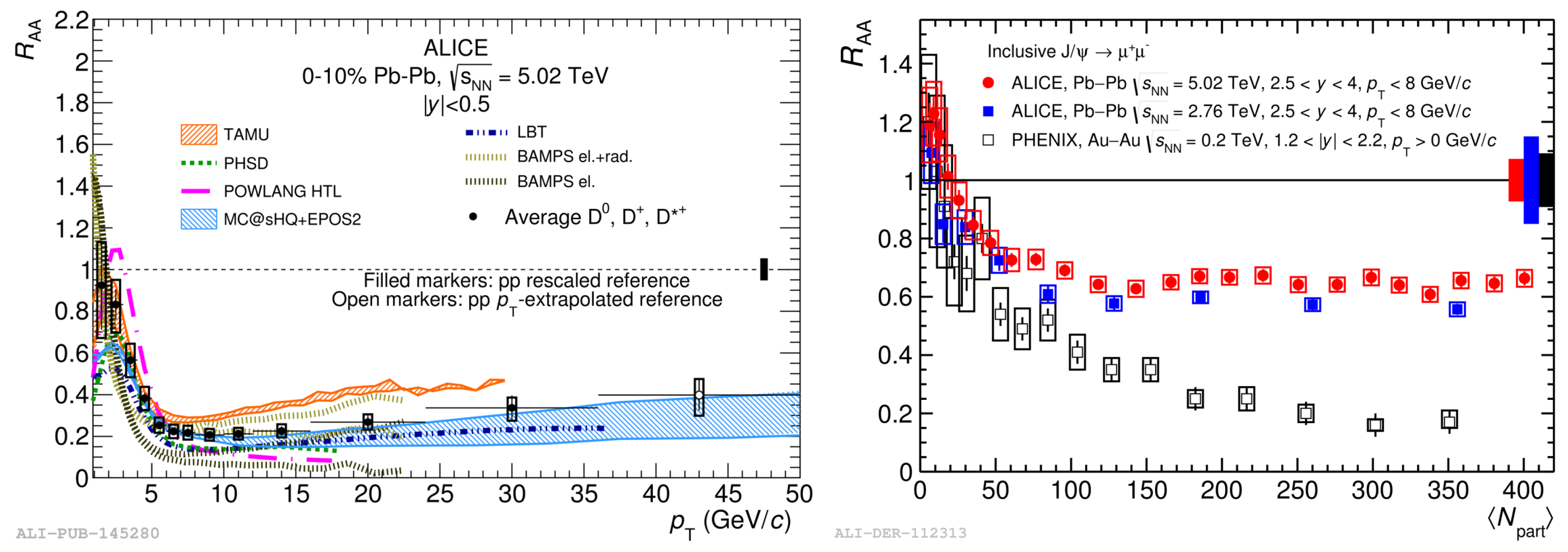
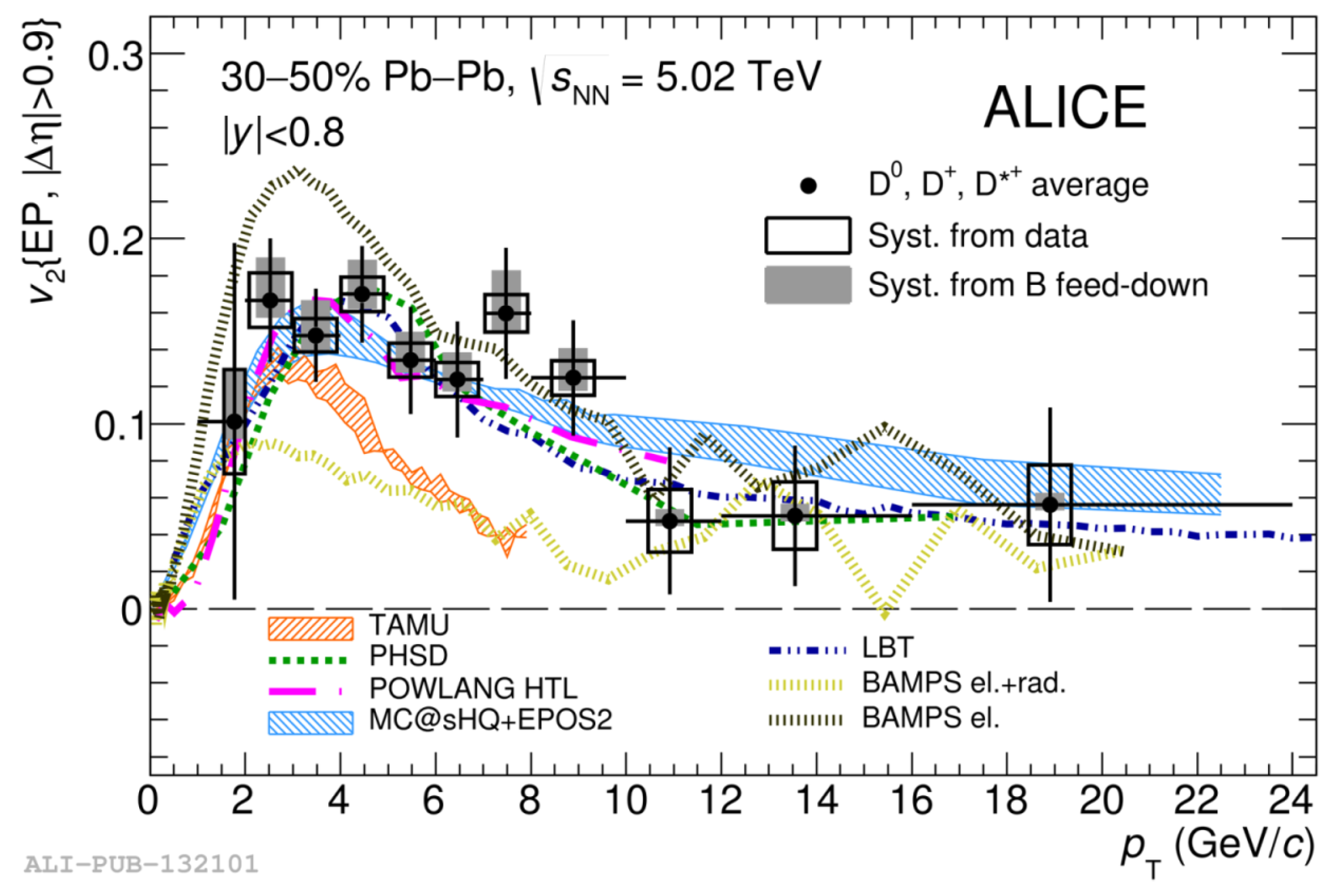
4. (Anti)Nuclei and Hypernuclei Production
5. The Alice Upgrade for Run-3 and Run-4
- Run-2 (ongoing up to 2018) collecting a luminosity in Pb–Pb of ;
- Run-3 (2021–2023) expecting a luminosity in Pb–Pb of ; and
- Run-4 (2026–2029) expecting a luminosity in Pb–Pb of .
Funding
Conflicts of Interest
References
- Aamodt, K.; et al. [ALICE Collaboration] The ALICE experiment at the CERN LHC. J. Instrum. 2008, 3, S08002. [Google Scholar]
- ALICE Collaboration. Performance of the ALICE Experiment at the CERN LHC. Int. J. Mod. Phys. A 2014, 29, 1430044. [Google Scholar] [CrossRef]
- ALICE collaboration. Performance of the ALICE VZERO system. J. Instrum. 2013, 8, P10016. [Google Scholar] [CrossRef]
- Abelev, B.; et al. [ALICE Collaboration] Centrality determination of Pb–Pb collisions at = 2.76 TeV with ALICE. Phys. Rev. C 2013, 88, 044909. [Google Scholar] [CrossRef]
- Aamodt, K.; et al. [ALICE Collaboration] Two-pion Bose-Einstein correlations in central Pb–Pb collisions at = 2.76 TeV. Phys. Lett. B 2011, 696, 328. [Google Scholar] [CrossRef]
- Abelev, B.; et al. [ALICE Collaboration] Pion, kaon, and proton production in central Pb–Pb collisions at = 2.76 TeV. Phys. Rev. Lett. 2012, 109, 252301. [Google Scholar] [CrossRef]
- Abelev, B.; et al. [ALICE Collaboration] Centrality dependence of π, K, and p production in Pb–Pb collisions at √ = 2.76 TeV. Phys. Rev. C 2013, 88, 044910. [Google Scholar] [CrossRef]
- Vitev, I.; Gyulassy, M. Jet quenching and the p ≳ π− anomaly in heavy ion collisions at relativistic energies Phys. Rev. C 2002, 65, 041902. [Google Scholar] [CrossRef]
- Adcox, K.; et al. [PHENIX Collaboration] Centrality Dependence of π+/−, K+/−, p, and p− Production from = 130 GeV Au+ Au Collisions at RHIC. Physical review letters. Phys. Rev. Lett. 2002, 88, 242301. [Google Scholar] [CrossRef]
- Abelev, B.; et al. [ALICE collaboration] K S 0 and Λ production in Pb–Pb collisions at = 2.76 TeV. Phys. Rev. Lett. 2013, 111, 222301. [Google Scholar] [CrossRef]
- Rafelski, J.; Muller, B. Strangeness production in the quark-gluon plasma. Phys. Rev. Lett. 1982, 48, 1066. [Google Scholar] [CrossRef]
- Ahle, L.; et al. [E-802 Collaboration] Kaon production in Au+ Au collisions at 11.6 A GeV/c. Phys. Rev. C 1998, 58, 3523. [Google Scholar] [CrossRef]
- Antinori, F.; et al. [NA57 Collaboration] Enhancement of hyperon production at central rapidity in 158 A GeV/c Pb–Pb collisions. J. Phys. G 2006, 32, 427. [Google Scholar] [CrossRef]
- Antinori, F.; et al. [NA57 Collaboration] Strangeness enhancements at central rapidity in 40 A GeV/c Pb–Pb collisions. J. Phys. G 2010, 37, 045105. [Google Scholar] [CrossRef][Green Version]
- Abelev, B.; et al. [STAR Collaboration] Enhanced strange baryon production in Au+ Au collisions compared to p+ p at = 200 GeV. Phys. Rev. C 2008, 77, 044908. [Google Scholar] [CrossRef]
- Abelev, B.; et al. [ALICE Collaboration] Multi-strange baryon production at mid-rapidity in Pb–Pb collisions at = 2.76 TeV. Phys. Lett. B 2014, 728, 216. [Google Scholar] [CrossRef]
- Adam, J.; et al. [ALICE Collaboration] Enhanced production of multi-strange hadrons in high-multiplicity proton-proton collisions. Nature Phys. 2017, 13, 535. [Google Scholar] [CrossRef]
- Abelev, B.; et al. [ALICE Collaboration] K* (892) 0 and ϕ (1020) production in Pb–Pb collisions at = 2.76 TeV. Phys. Rev. C 2015, 91, 024609. [Google Scholar] [CrossRef]
- Acharya, S.; et al. [ALICE Collaboration] Anisotropic flow of identified particles in Pb–Pb collisions at = 5.02 TeV. J. High Energy Phys. 2018, 2018, 006. [Google Scholar] [CrossRef]
- Bernhard, J.E. Bayesian parameter estimation for relativistic heavy-ion collisions. arXiv 2018, arXiv:1804.06469. [Google Scholar]
- D’Enterria, D. Nuclei–Relativistic Heavy Ion Physics; Landolt-Bornstein; Springer: Berlin/Heidelberg, Germany, 2010; Volume 23. [Google Scholar]
- Bjorken, J.D. Energy Loss of Energetic Partons in Quark-Gluon Plasma: Possible Extinction of High p (t) Jets in Hadron-Hadron Collisions. Available online: http://lss.fnal.gov/archive/preprint/fermilab-pub-82-059-t.shtml (accessed on 3 June 2019).
- Gyulassy, M.; Plumer, M. Jet quenching in dense matter. Phys. Lett. B 1990, 243, 432. [Google Scholar] [CrossRef]
- Wang, X.; Gyulassy, M. Gluon shadowing and jet quenching in A+ A collisions at = 200 A GeV. Phys. Rev. Lett. 1992, 68, 1480. [Google Scholar] [CrossRef] [PubMed]
- Baier, R.; Schiff, D.; Zakharov, B.G. Energy loss in perturbative QCD. Ann. Rev. Nucl. Part. Sci. 2000, 50, 37. [Google Scholar] [CrossRef]
- Adcox, K.; et al. [PHENIX Collaboration] Suppression of Hadrons with Large Transverse Momentum in Central Au+ Au Collisions at = 130 GeV. Phys. Rev. Lett. 2002, 88, 022301. [Google Scholar]
- Abelev, B.; et al. [ALICE Collaboration] Transverse momentum distribution and nuclear modification factor of charged particles in p+ Pb collisions at = 5.02 TeV. Phys. Rev. Lett. 2013, 110, 082302. [Google Scholar] [CrossRef]
- Acharya, S.; et al. [ALICE Collaboration] Transverse momentum spectra and nuclear modification factors of charged particles in Xe-Xe collisions at = 5.44 TeV. Phys. Lett. B 2019, 788, 166. [Google Scholar] [CrossRef]
- Acharya, S.; et al. [ALICE Collaboration] Measurement of D0, D+, D*+ and Ds+ production in Pb–Pb collisions at = 5.02 TeV. J. High Energy Phys. 2018, 2018, 174. [Google Scholar] [CrossRef]
- Abelev, B.; et al. [ALICE Collaboration] Measurement of Prompt D-Meson Production in p− Pb Collisions at = 5.02 TeV. Phys. Rev. Lett. 2014, 113, 232301. [Google Scholar] [CrossRef]
- Matsui, T.; Satz, H. J/ψ suppression by quark-gluon plasma formation. Phys. Lett. B 1986, 178, 416. [Google Scholar] [CrossRef]
- Abelev, B.; et al. [ALICE Collaboration] J/ψ suppression at forward rapidity in Pb–Pb collisions at = 2.76 TeV. Physical review letters. Phys. Rev. Lett. 2012, 109, 072301. [Google Scholar] [CrossRef]
- Adam, J.; et al. [ALICE Collaboration] Differential studies of inclusive J/ψ and ψ (2S) production at forward rapidity in Pb–Pb collisions at = 2.76 TeV. J. High Energy Phys. 2016, 2016, 179. [Google Scholar] [CrossRef]
- Adam, J.; et al. [ALICE Collaboration] J/ψ suppression at forward rapidity in Pb–Pb collisions at = 5.02 TeV. Phys. Lett. B 2017, 766, 212. [Google Scholar] [CrossRef]
- Adare, A.; et al. [PHENIX Collaboration] J/ψ Production versus Centrality, Transverse Momentum, andRapidity in Au+ Au Collisions at = 200 GeV. Phys. Rev. Lett. 2007, 98, 232301. [Google Scholar] [CrossRef] [PubMed]
- Adare, A.; et al. [PHENIX Collaboration] J/ϕ suppression at forward rapidity in Au+ Au collisions at = 200 GeV. Phys. Rev. C 2011, 84, 054912. [Google Scholar] [CrossRef]
- Acharya, S.; et al. [ALICE Collaboration] Λ c+ production in pp collisions at =7 TeV and in p-Pb collisions at sNN = 5.02 = 5.02 TeV. J. High Energy Phys. 2018, 2018, 108. [Google Scholar] [CrossRef]
- Acharya, S.; et al. [ALICE Collaboration] First measurement of Θ c0 production in pp collisions at = 7 TeV. Phys. Lett. B 2018, 781, 8. [Google Scholar] [CrossRef]
- Acharya, S.; et al. [ALICE Collaboration] Production of 4He and He− 4 in Pb–Pb collisions at = 2.76 TeV at the LHC. Nucl. Phys. A 2018, 971, 1. [Google Scholar] [CrossRef]
- Adam, J.; et al. [ALICE Collaboration] Production of light nuclei and anti-nuclei in p p and Pb–Pb collisions at energies available at the CERN Large Hadron Collider. Phys. Rev. C 2016, 93, 024917. [Google Scholar] [CrossRef]
- ALICE Collaboration. Upgrade of the ALICE Readout & Trigger System; Technical Design Report; ALICE Collaboration: Geneva, Switzerland, 2013. [Google Scholar]
- ALICE Collaboration. Upgrade of the ALICE Experiment: Letter of Intent; Technical Design Report; ALICE Collaboration: Geneva, Switzerland, 2012. [Google Scholar]
- ALICE Collaboration. Technical Design Report for the Upgrade of the Online-Offline Computing System; Technical Design Report; ALICE Collaboration: Geneva, Switzerland, 2015. [Google Scholar]
- Citron, Z.; Dainese, A.; Grosse-Oetringhaus, J.F.; Jowett, J.M.; Lee, Y.J.; Wiedemann, U.A.; Winn, M.; Andronic, A.; Bellini, F.; Bruna, E.; et al. Future physics opportunities for high-density QCD at the LHC with heavy-ion and proton beams. arXiv 2018, arXiv:1812.06772. [Google Scholar]
- ALICE Collaboration. Technical Design Report for the Upgrade of the ALICE Inner Tracking System; Technical Design Report ALICE: Geneva, Switzerland, 2013. [Google Scholar]
- ALICE Collaboration. CMS-TOTEM Precision Proton Spectrometer; Technical Design Report; ALICE Collaboration: Geneva, Switzerland, 2015. [Google Scholar]

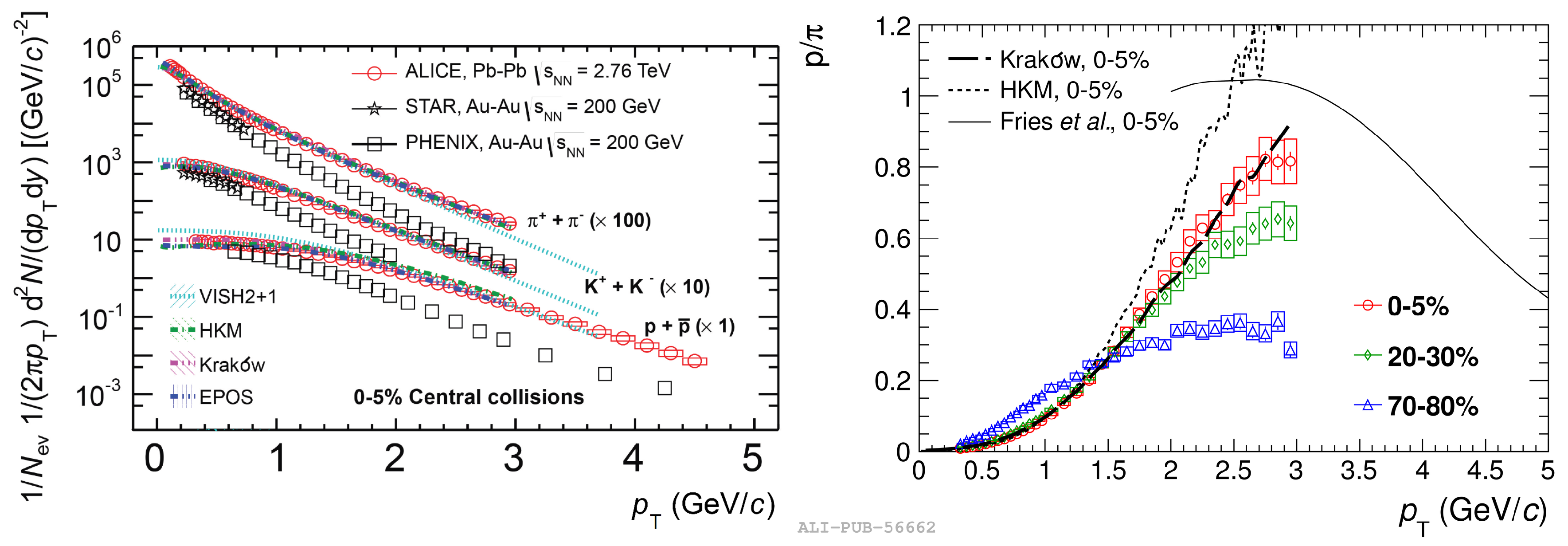

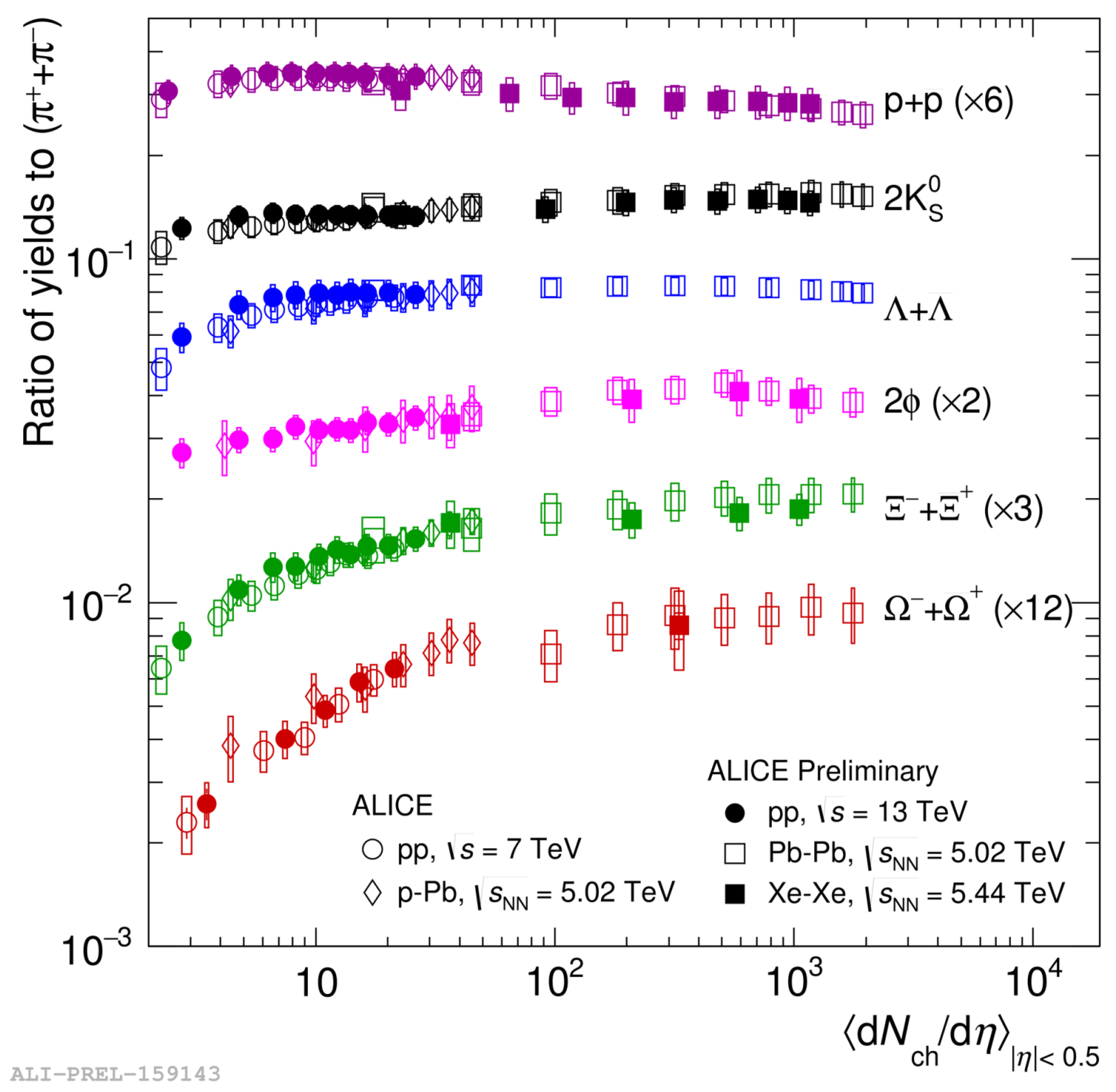
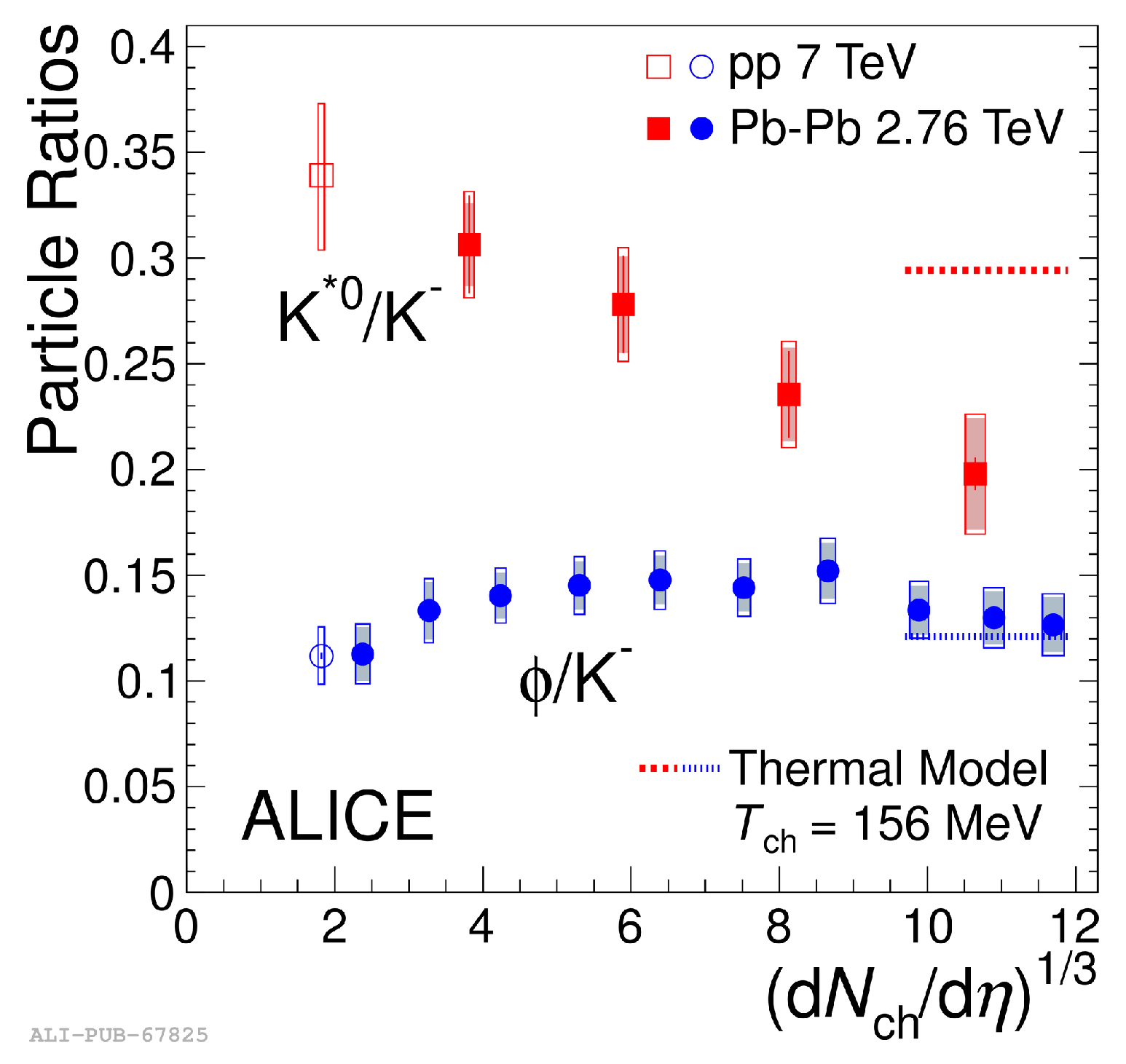
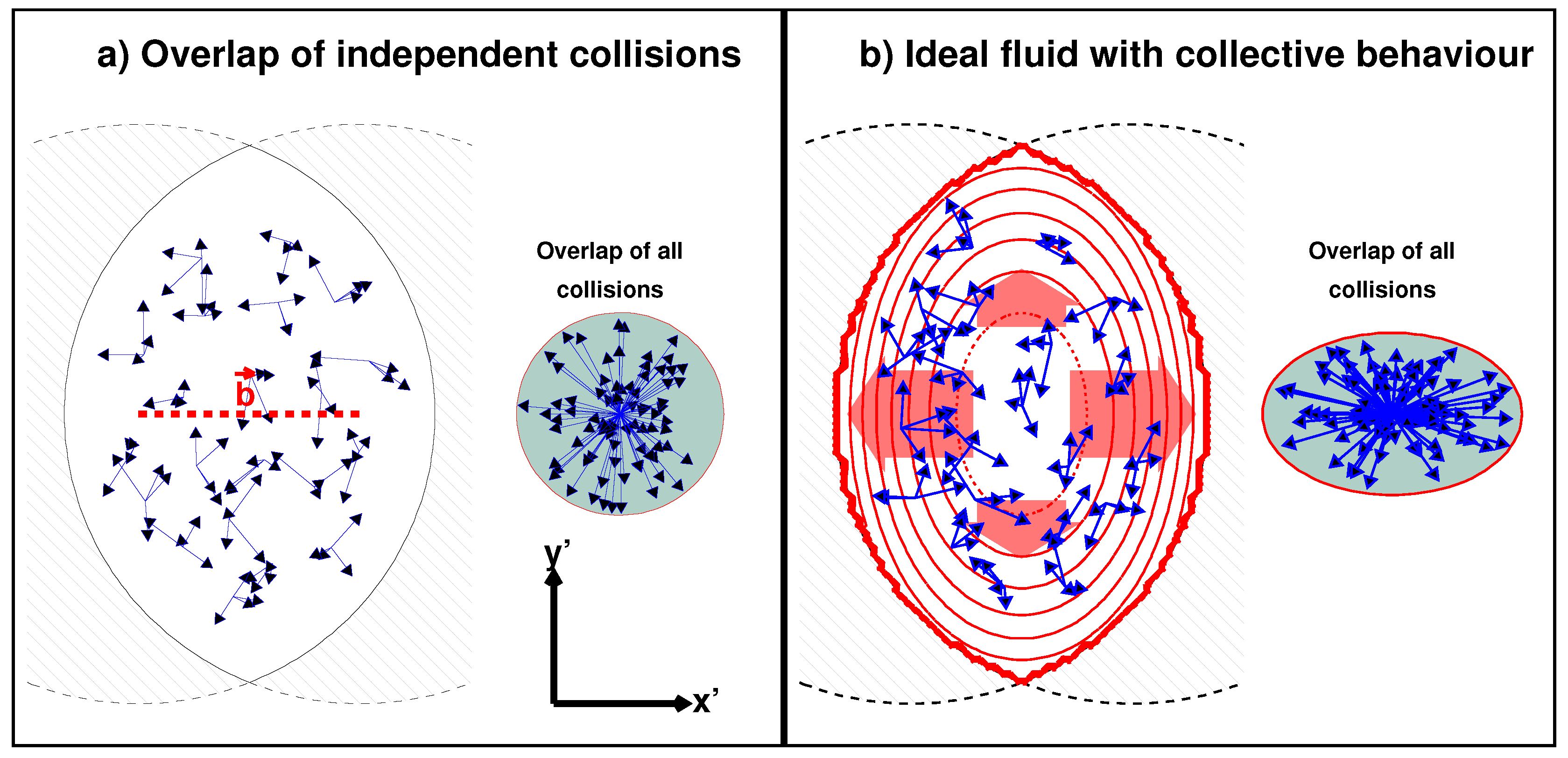
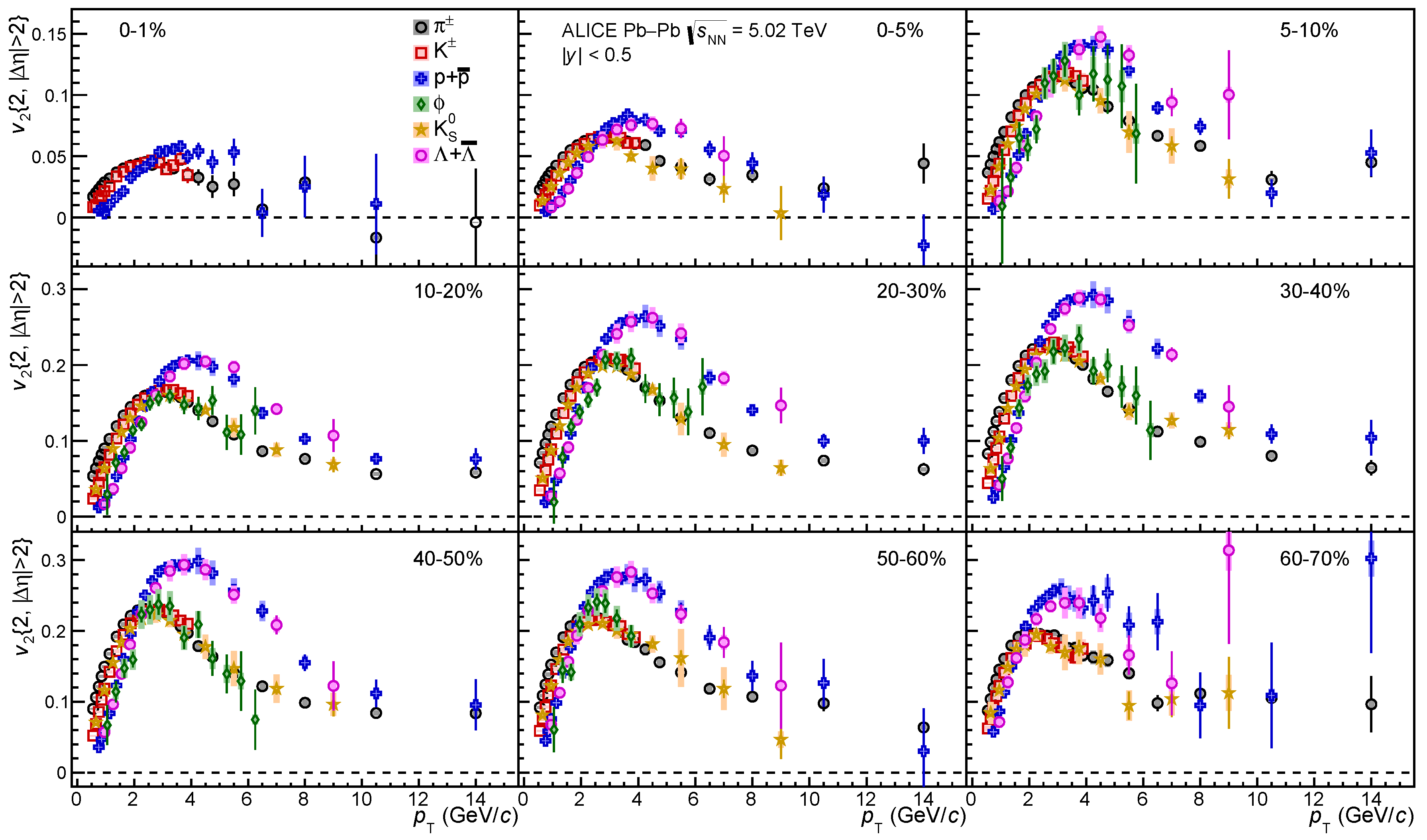

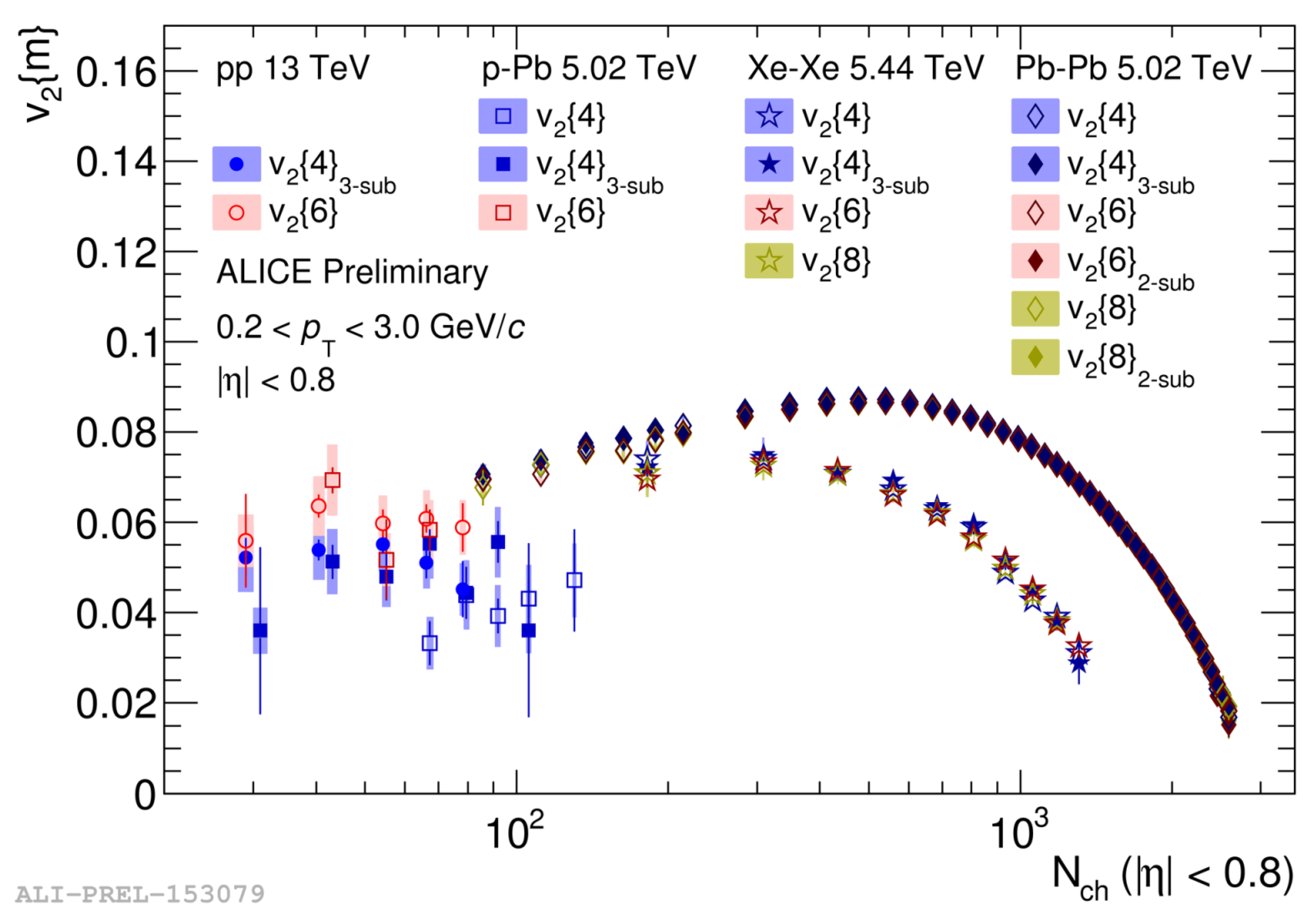
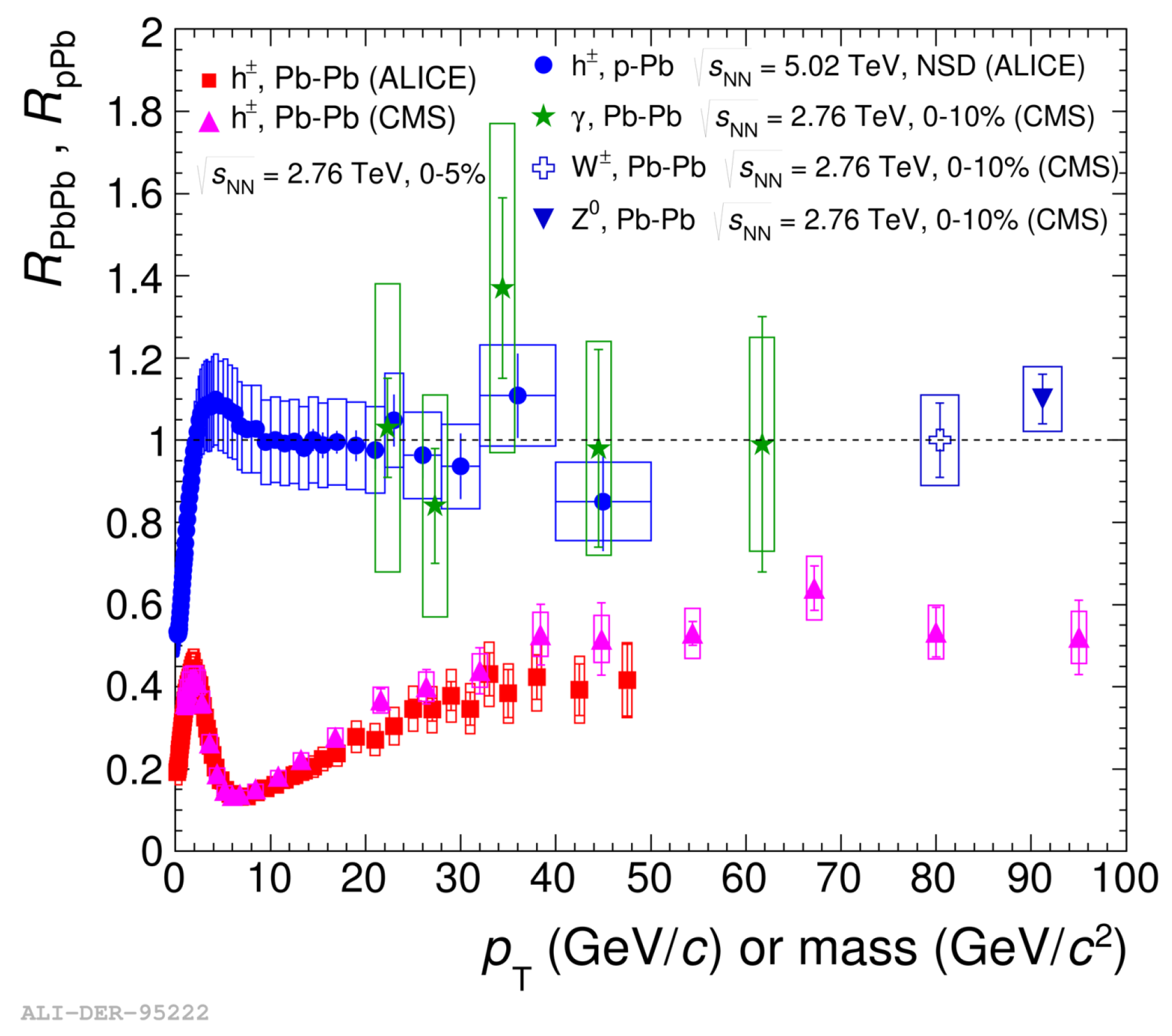
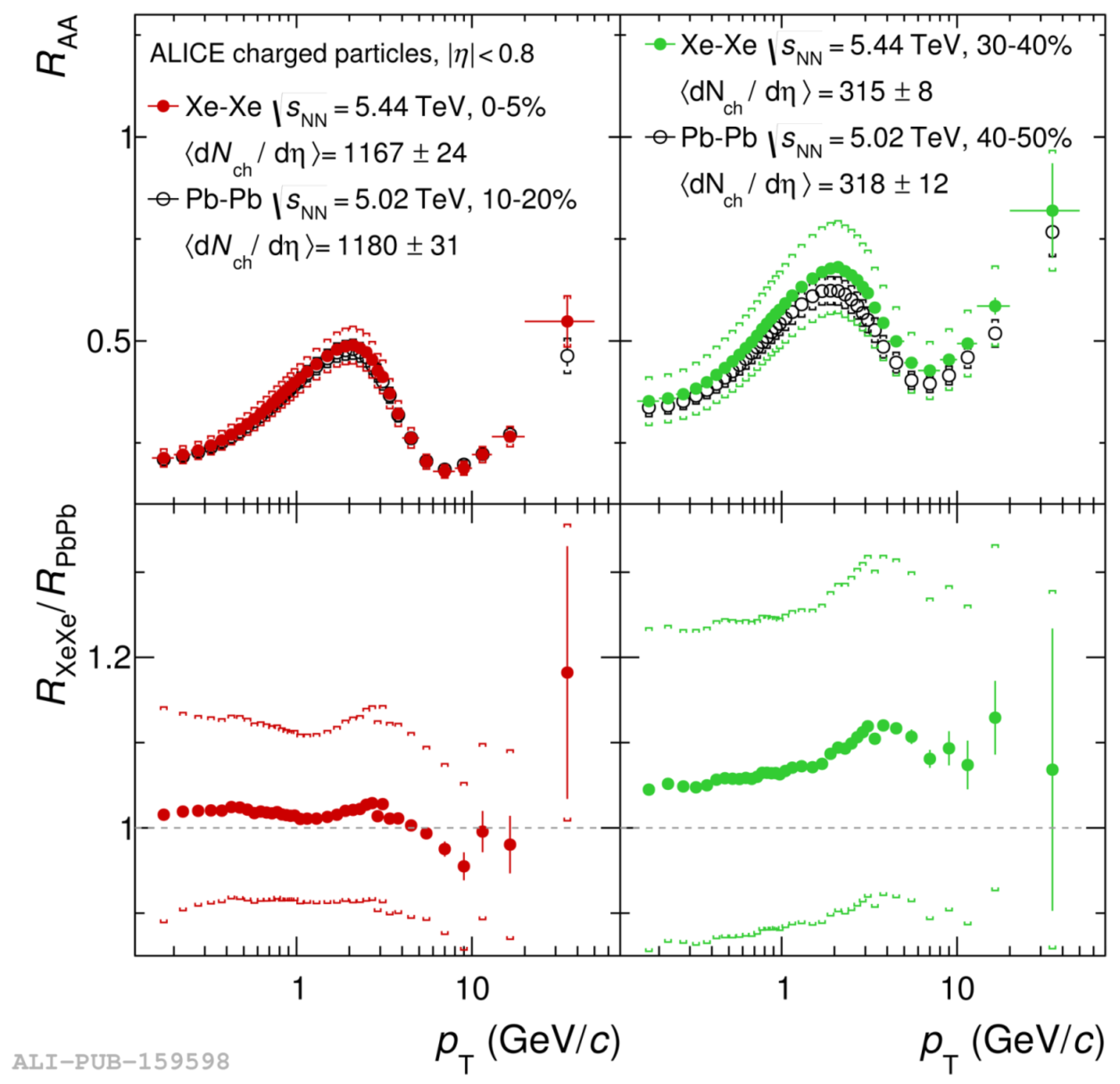
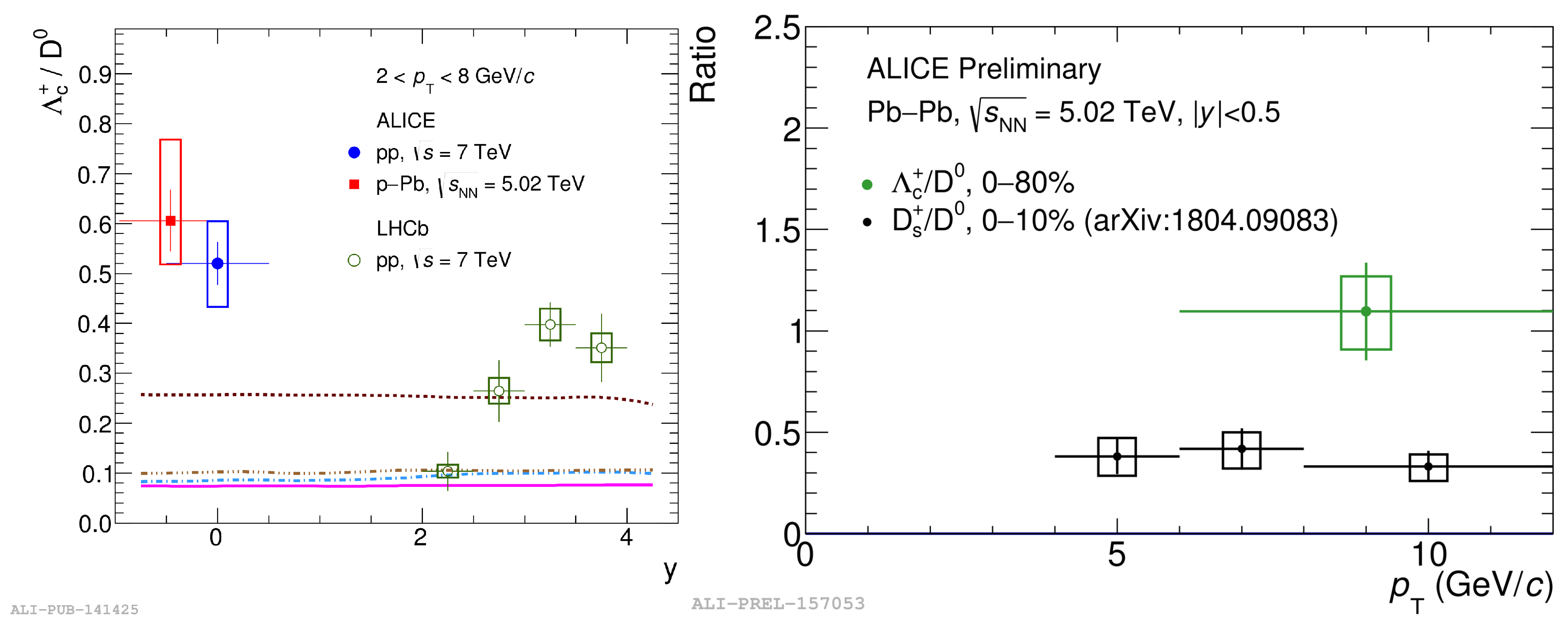
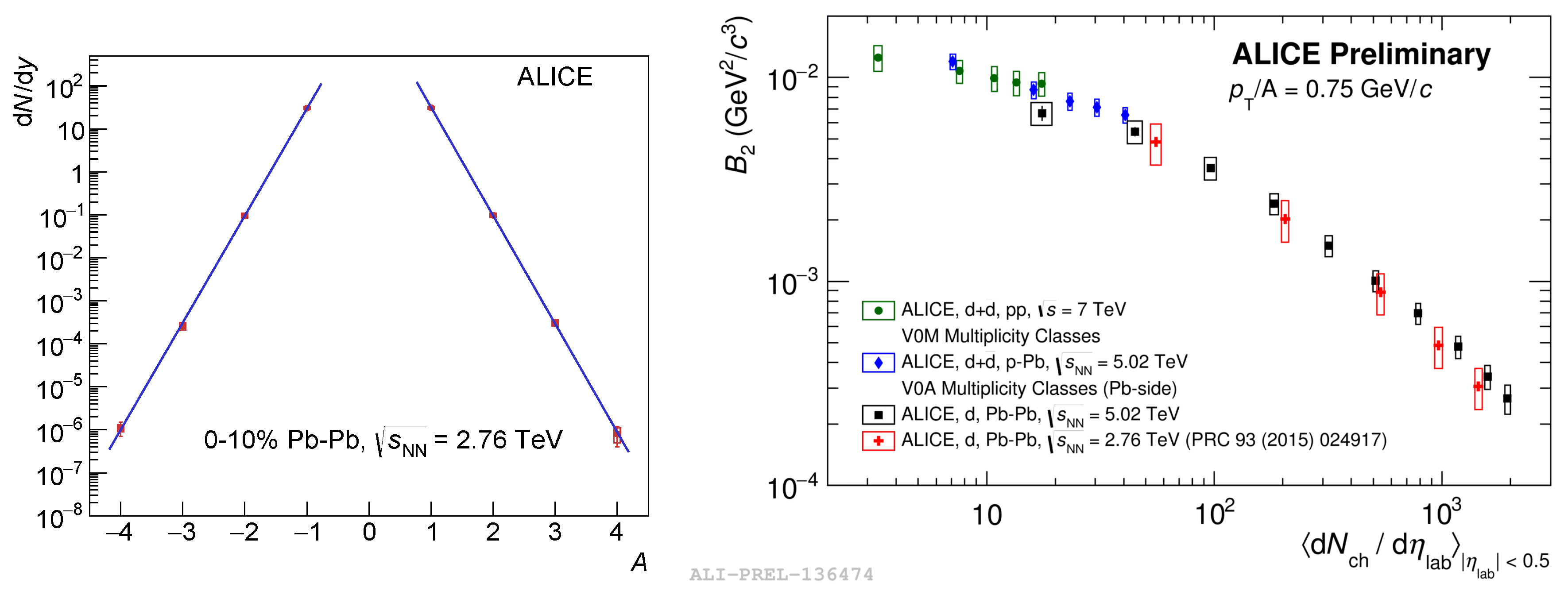
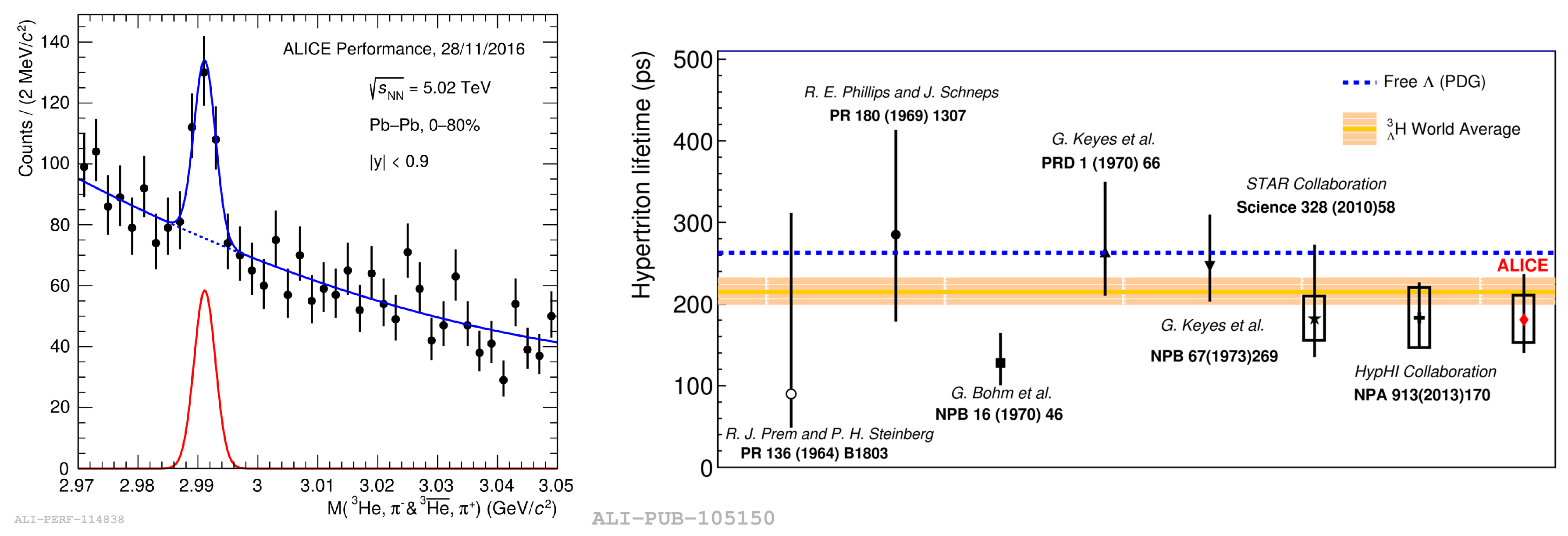
| Year | Systems | (TeV) | Integrated Luminosity (nb) |
|---|---|---|---|
| Run-1 | |||
| 2009–2013 | pp | 0.9, 2.76, 7, 8 | ∼0.2, ∼100, ∼1500, ∼2500 |
| 2013 | p–Pb | 5.02 | ∼15 |
| 2010–2011 | Pb–Pb | 2.76 | ∼0.075 |
| Run-2 | |||
| 2015–2018 | pp | 5.02, 13 | ∼1300, ∼35,000 |
| 2016 | p–Pb | 5.02, 8.16 | ∼3, ∼25 |
| 2015 | Pb–Pb | 5.02 | ∼0.25 |
| 2017 | Xe–Xe (B = 0.2 T) | 5.44 | ∼0.0003 |
| 2018 | Pb–Pb | 5.02 | expected by end of 2018 ∼1 |
© 2019 by the author. Licensee MDPI, Basel, Switzerland. This article is an open access article distributed under the terms and conditions of the Creative Commons Attribution (CC BY) license (https://creativecommons.org/licenses/by/4.0/).
Share and Cite
Collaboration, F.N.o.b.o.t.A. ALICE Highlights. Proceedings 2019, 13, 6. https://doi.org/10.3390/proceedings2019013006
Collaboration FNobotA. ALICE Highlights. Proceedings. 2019; 13(1):6. https://doi.org/10.3390/proceedings2019013006
Chicago/Turabian StyleCollaboration, Francesco Noferini on behalf of the ALICE. 2019. "ALICE Highlights" Proceedings 13, no. 1: 6. https://doi.org/10.3390/proceedings2019013006
APA StyleCollaboration, F. N. o. b. o. t. A. (2019). ALICE Highlights. Proceedings, 13(1), 6. https://doi.org/10.3390/proceedings2019013006




